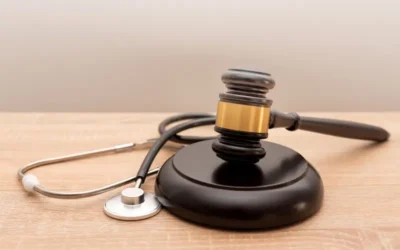Accurate and complete medical documentation is vital for appropriate and efficient patient care. It is also essential for physicians to stay away from medical malpractice concerns. A chart review can easily determine whether the medical chart is complete and adequate. Only when all patient care information is correctly recorded, physicians can monitor what is being done and prevent the risk of medical errors. When the medical documentation is systematic, all details regarding the patient’s healthcare delivery are available and it is easy to find which healthcare provider performed a service or subscribed a medication. Improper or shabby medical documentation carries the risk of medical litigation and quality assurance concerns.
To ensure that your medical documentation is error-free and compliant, get in touch with MOS Medical Record Review.
Click here to learn more about our medical record review services.
An ahima.org article throws light on the four most common documentation errors.
- Illegible physician handwriting, misunderstood dictation and unclear messages from the physician:
- Though EHR use can help avoid problems such as illegible handwriting and misunderstood dictation, there are physicians who still prefer to dictate and get the dictations transcribed. Transcription errors could occur, and this requires detailed proofreading.
- There is also the possibility of a busy physician dictating a note into the wrong patient’s chart. Coders may not identify the mistake because they may be coding without checking whether the entry matches the rest of the chart. If the entry is not corrected, it could lead to disastrous consequences for the patient. When a wrong diagnosis is made in the patient chart, it may get carried on when the patient changes insurance companies, and this results in a pre-existing condition being entered. As a result, the patient could be mistakenly put on a waiting period for insurance.
- Nurses taking orders from physicians over the phone could misunderstand the names of medications, especially similar sounding medications. Now, many hospital departments are trying to avoid this error by putting up lists of frequently confused medical terminology and medications.
- Though EHRs can help eliminate the concern of illegible physician handwriting, they can also be wrongly interpreted or be difficult to interpret.
- Abbreviations are another concern both in paper and electronic documentation. An example given is “q.i.d” which signifies that a medication is to be taken four times a day. It looks and sounds like “q.d” which means the medication is prescribed for once a day. Similarly, MS can refer to morphine sulfate, multiple sclerosis; it can denote altered mental status or the cardiology term mitral stenosis. There are physicians who take frequent shortcuts such as documenting “multi-organ failure” instead of mentioning the specific organs. This could lead to failure to convey the severity of an illness, compromised patient care and delayed reimbursement apart from malpractice risk.
- Copy – paste issues: EHRs allow users to reuse all or parts of the narrative portion of the health record. This is accessible and visible to other providers who may access the record at a later time. Incorrect use of copy-paste is a serious issue. It can lead to patient harm. It makes it challenging to understand the progression or resolution of an illness. As a result, it could send flags for auditors who are looking for fraud. Wrong copy-paste practice can add more pages to a patient’s health record and slow down various processes including medical record review.
- Incomplete/missing documentation: This is also a common problem found in the medical chart. Many providers may use ambiguous terminology such as “not otherwise specified” or “unspecified” and it may be some important information that goes missing in the medical chart. Missing health information could cause harm to the patient and also negatively impact physician reimbursement. When documentation is incomplete or ambiguous, it could lead to calls from Medicare auditors and insurance companies looking for documentation supporting medical necessity.
- Documentation that is misplaced: Misplaced patient data is another grave concern related to medical documentation. Procedure notes ending up in the progress note section is one instance. Physicians not happy with their EHR setup may start using their own templates and this could also lead to placing documentation in the wrong places in the medical record. When information is misplaced, it can be frustrating and a lot of time will be wasted searching for the information. Sometimes facilities may be using a hybrid record model, with both paper and electronic records. This could cause physicians and nurses to work with incomplete information because many records such as lab reports, radiology reports and so on may be missing when the patient is sitting in front of the physician.
Incomplete medical record and documentation errors can have the following negative consequences.
- It is proof that the care provided was incomplete or inadequate
- Demonstrates non-compliance with the policies of the organization
- Gaps in documentation reflect poor clinical care
- Can be used to support medical malpractice allegations
- Can be used to support allegations of fraud
- It could lead to the physician losing his/her license
- Loss of revenue/reimbursement
Clinical documentation improvement (CDI) specialists should ensure that these documentation errors are kept at bay so that the quality of patient care can be improved and maximum reimbursement ensured. Physicians should be trained to write good notes in keeping with the type of insurance and patient. For example, the style of writing a note for a Medicare patient is different from that of writing for a BCBS (Blue Cross/Blue Shield) patient. A complete medical chart makes processes such as medical record review easy for medical review companies assisting attorneys handling medical litigation.




